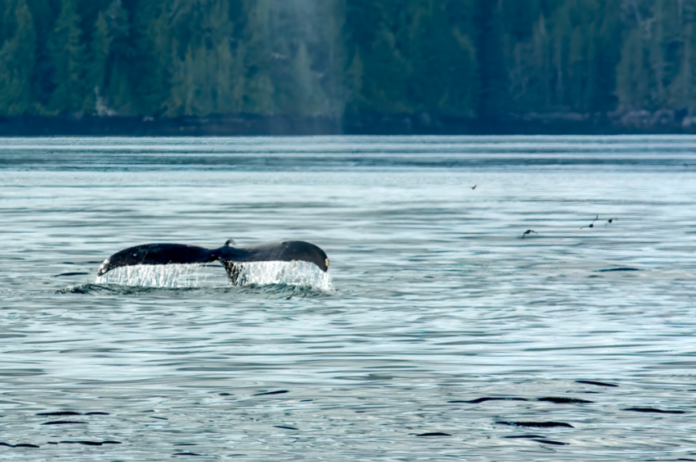Commercial fishers could learn a lot from salmon farmers when it comes to protecting humpback whales.
That’s the recommendation from one of the authors of a new study looking at whale entanglements at BC fish farms since 2008. Dr. Andrew Trites from UBC points out entanglements at salmon farms, while unfortunate, only make up 6% of all incidents on the coast. Industries making up the remaining 94%, especially prawn and crab fishers, need to “step up,” he says.
“Unlike active aquaculture facilities which are tightly regulated and monitored, crab and prawn gear is usually left unattended and sometimes derelict,” the study says. “In addition, crab and prawn gear tends to be more abundant, and is usually put out in the summer months when humpback whales are more abundant.”
The study points out the response from salmon farmers in the eight incidents since 2008 was varied, with efforts to coax a whale out in one case actually contributing to its death. However, five of eight whales were successfully released and swam away mostly unharmed. One whale died on site, and the other is believed to have been dead already when it became entangled. Some of the sites were fallowed, and in five cases, the whales became trapped in the gap between exterior predator nets and interior containment nets for the farmed salmon.
All of the incidents at salmon farms happened in the off-season for humpback whales, when most have migrated south to Mexico. Humpback whales are in BC waters year-round, but numbers are lowest from November to April.
The study concludes that the incidents all involved juvenile whales, likely hunting for herring during fall and spring, who may have become entangled because they could not see the nets above them. Humpback whales do not have sonar, and their eyes are on the sides of their heads, limiting their vision.
The study recommends farmers work more closely with experts when entanglements happen and develop better response protocols.






